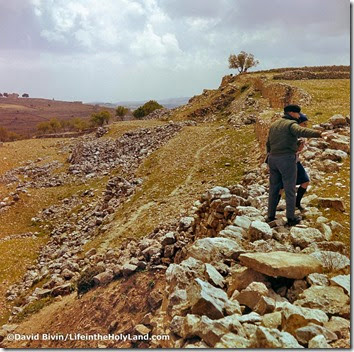The William G. Dever Archaeological Fellowship for Biblical Scholars is a travel-study award for “a qualified American untenured faculty member in the field of biblical studies who wants to acquire elementary, first-hand experience in field archaeology and research in Israel.”
Wayne Stiles explains how Kadesh Barnea helps us to know God’s will.
Jerusalem’s recent snowfall: SourceFlix shares some beautiful aerial footage.
Swedish archaeologists have found near Cairo a 2,500-year-old relief depicting two pharaonic deities.
And Czech archaeologists find tomb of previously unknown pharaonic queen Khentakawess.
The original volumes of the Tell en-Nasbeh (biblical Mizpah) excavation reports are now available online for the first time. The Bade Museum website includes a couple of other downloads that may be of interest.
And now published by Gorgias Press: “As for me, I will dwell at Mizpah …”: The Tell en-Nasbeh Excavations after 85 Years, edited by Jeffrey R. Zorn & Aaron J. Brody.
The Yale Babylonian Collection now has its own website.
The open access, electronic companion to Royal Inscriptions of the Neo-Assyrian Period, volume 3/2 (Eisenbrauns, 2014) is now online.
The authenticity of two Baruch son of Neriah bullae is rejected in a new article by Yuval Goren and
Eran Arie in BASOR vol. 372 (December 2014), pp. 147-158. (Abstract and article on JStor. And there’s free access to the entire issue via the BASOR website.)
“Patterns of Evidence: Exodus,” claims to solve the problem of lack of evidence, but it appears to do so by a major chronological revision. As far as I’m concerned, a movie showing on only one night (Jan 19, 7pm) in selected theaters doesn’t deserve much attention.
A full-scale sailing replica of the Ma‘agan Michael is now under construction. The original ship wrecked near Dor in 400 BC and was discovered in 1985.
Both portions of P46 have now been digitized and are available online.
Kevin Shillington has begun a series on Charles Warren on the Palestine Exploration Fund Blog.
Coming soon: Discovery House Bible Atlas, by John Beck.
HT: Ted Weis, Agade, BibleX
Photo by David Bivin




